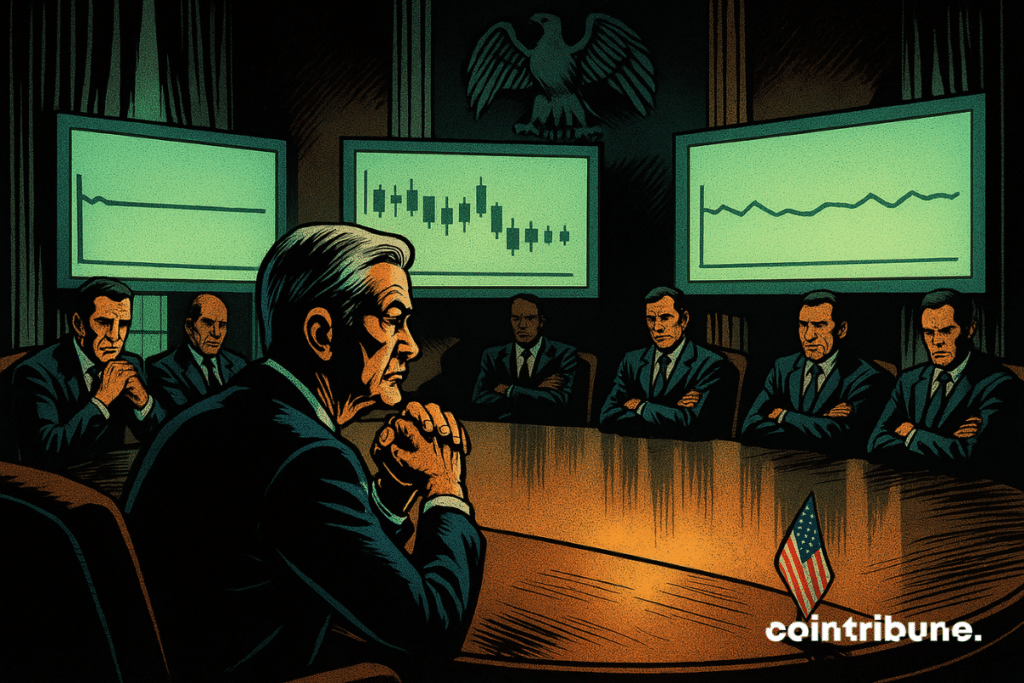PCE Report Delivers Zero Surprises - US Economic Demand Flexes Unshakable Strength
Another inflation report, another non-event. The Personal Consumption Expenditures data just confirmed what markets already sensed - no nasty surprises lurking in the economic shadows.
The Real Story Behind the Numbers
Forget the technical jargon. This report screams one thing: American consumers haven't lost their appetite. Demand isn't just holding up - it's punching back against recession fears with the subtlety of a sledgehammer.
What This Means for Markets
Traders yawned through the PCE release because strong demand is the new normal. The Fed's favorite inflation metric behaving itself while spending stays robust? That's the economic equivalent of having your cake and eating it too - though Wall Street will still find something to panic about by lunchtime.
The bottom line: When economic data gets this predictable, maybe the real surprise is that anyone's still surprised. Another day, another confirmation that the only thing rising faster than prices is traders' blood pressure over nothing.
 Read us on Google News
Read us on Google News
In Brief
- The latest PCE inflation figures for August 2025 show the expected stability, with the core rate held at 2.9 % year over year.
- Overall inflation rose slightly to 2.7 %, driven by moderate increases in energy, food, and housing.
- American consumption remains robust, with spending and income up, and a saving rate that rose to 4.6 %.
- These data confirm the Fed’s current path, which forecasts two more rate cuts by the end of this year.
Inflation Under Control : The Figures Confirm the Path
While the Fed hesitates on the path to follow, the Department of Commerce report for August confirms that the American economy continues its course toward a price normalization without abrupt disruption.
Inflation remains measured, markets are reassured, and the Federal Reserve can maintain its strategy without premature adjustment. Thus, all data conform to the Dow Jones consensus forecasts, avoiding any major surprise.
Here are the main points to note from this release :
- Overall PCE index (monthly ): +0.3 % in August ;
- Overall PCE index (annual) : +2.7 %, compared to 2.6 % in July ;
- Core PCE index (excluding food and energy) : +0.2 % monthly / +2.9 % annual ;
- Price evolution by sector : by sector, prices rose 0.8 % in energy, 0.5 % in food, 0.4 % in housing, 0.3 % for services, and 0.1 % for goods.
These figures show that despite some targeted increases in the energy, food, and housing sectors, overall remains under control, with a Core inflation rate still below the symbolic 3 % threshold.
The Fed, which uses the PCE index as its primary reference rather than the CPI, continues to judge this framework suitable for its medium-term inflation goal set at 2 %. The absence of a sharp acceleration thus supports the projections of two new rate cuts by the end of the year.
Strong Consumption
Beyond the inflation figures themselves, the report reveals a particularly robust consumption dynamic. In August, American household spending ROSE by 0.6 %, while personal incomes increased by 0.4 %, two figures above expectations, which demonstrate the strength of domestic demand.
For Chris Rupkey, chief economist at Fwdbonds, this trend illustrates a true comeback of the consumer : “clearly, consumers have made a real splash […] Summer was the chosen time for a spree of vengeful spending”, he commented.
Moreover, the personal saving rate increased to 4.6 %, a signal that households are not spending at the expense of their financial resilience.
Furthermore, economists note that tariffs introduced by the TRUMP administration had a limited effect on consumer prices. Many companies anticipated these measures by building up inventories or absorbing costs. This proactive management helped avoid an immediate transmission of price increases to households.
In this environment of monetary uncertainty, Bitcoin appears again as a potential safe-haven asset for some investors. While the stability of fiat currencies remains subject to central bank decisions, BTC’s programmed scarcity and decentralized monetary policy offer an alternative perceived as more predictable.
The Federal Reserve can therefore continue, without haste, its rate-cutting path initiated last week, with a first reduction of 25 basis points. Markets anticipate another cut as early as October, although the possibility of a second MOVE in December remains uncertain. The current stability of core inflation gives the Fed the necessary leeway, without having to face runaway price signals.
Maximize your Cointribune experience with our "Read to Earn" program! For every article you read, earn points and access exclusive rewards. Sign up now and start earning benefits.

